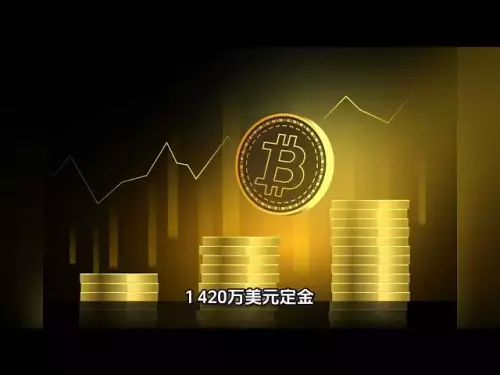-
 Bitcoin
Bitcoin $111200
0.90% -
 Ethereum
Ethereum $4291
0.34% -
 XRP
XRP $2.875
2.59% -
 Tether USDt
Tether USDt $1.000
0.01% -
 BNB
BNB $874.2
1.69% -
 Solana
Solana $204.6
1.95% -
 USDC
USDC $1.000
0.01% -
 Dogecoin
Dogecoin $0.2242
4.43% -
 TRON
TRON $0.3296
2.80% -
 Cardano
Cardano $0.8303
1.32% -
 Hyperliquid
Hyperliquid $47.06
2.49% -
 Chainlink
Chainlink $22.24
0.88% -
 Ethena USDe
Ethena USDe $1.001
0.01% -
 Sui
Sui $3.390
2.03% -
 Bitcoin Cash
Bitcoin Cash $603.7
1.59% -
 Stellar
Stellar $0.3594
1.02% -
 Avalanche
Avalanche $24.53
0.60% -
 Hedera
Hedera $0.2191
2.28% -
 UNUS SED LEO
UNUS SED LEO $9.547
-0.29% -
 Cronos
Cronos $0.2604
-2.54% -
 Litecoin
Litecoin $114.3
1.95% -
 Toncoin
Toncoin $3.099
1.18% -
 Shiba Inu
Shiba Inu $0.00001241
1.41% -
 Polkadot
Polkadot $3.979
4.42% -
 Uniswap
Uniswap $9.338
0.52% -
 World Liberty Financial
World Liberty Financial $0.2281
6.80% -
 Dai
Dai $1.000
0.00% -
 Ethena
Ethena $0.7424
1.91% -
 Monero
Monero $271.5
1.22% -
 Aave
Aave $301.2
0.96%
What are the main risks of futures trading?
Crypto futures trading carries high risks including leverage-induced liquidations, extreme volatility, funding rate costs, market manipulation, and psychological stress, requiring strict risk management.
Sep 07, 2025 at 07:54 pm
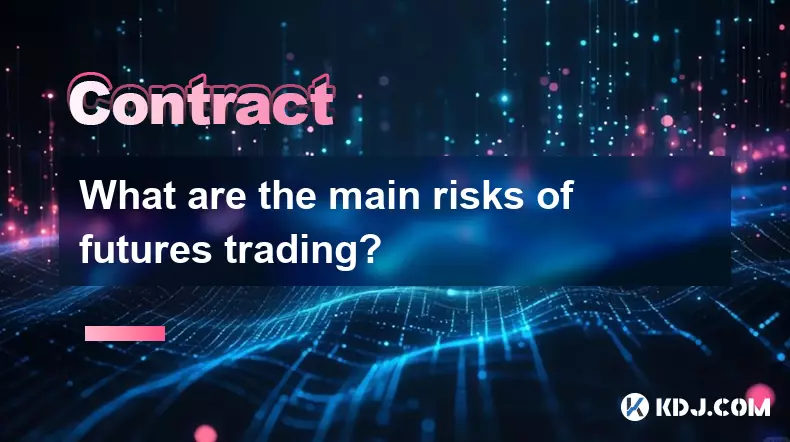
Main Risks Associated with Futures Trading in the Crypto Market
1. Leverage amplifies both gains and losses, making it one of the most significant hazards in crypto futures trading. Traders can control large positions with relatively small capital, but this also means that even minor price fluctuations can trigger substantial losses. A sudden market reversal can lead to a complete loss of margin in highly leveraged positions.
2. The cryptocurrency market is inherently volatile, with prices capable of swinging dramatically within minutes. This volatility increases the likelihood of liquidation, especially during periods of high market stress or unexpected news events. Futures contracts tied to assets like Bitcoin or Ethereum can experience extreme price action that overwhelms risk management strategies.
3. Funding rates in perpetual futures contracts can erode profits over time, particularly in trending markets. Long positions may face continuous payments to short holders during strong downtrends, while short positions pay longs in uptrends. These recurring costs can accumulate, turning what appears to be a profitable trade into a losing one.
4. Exchange-specific risks such as technical outages, delayed executions, or manipulation through wash trading can severely impact futures traders. During high volatility, some platforms may struggle to keep up with order execution, leading to slippage or inability to close positions at desired prices. This lack of control heightens exposure during critical moments.
5. Psychological pressure plays a major role in decision-making during futures trading. The constant monitoring required, combined with the threat of liquidation, often leads to emotional trading. Fear and greed can prompt impulsive entries or premature exits, undermining disciplined strategies and compounding losses.
Liquidation and Margin Mechanics
1. Margin requirements vary across exchanges and leverage levels, but failure to maintain sufficient margin results in automatic liquidation. Once the maintenance margin threshold is breached, the position is closed, often at unfavorable prices due to market depth issues.
2. Cross-margin and isolated-margin modes offer different risk profiles. In cross-margin, the entire account balance acts as collateral, risking total funds on a single trade. Isolated margin limits exposure to a predefined amount but can still lead to full loss of that allocated capital.
3. Liquidation engines on exchanges may trigger cascading sell-offs during volatile events. When multiple positions are liquidated simultaneously, the resulting market impact can drive prices further in the same direction, creating a feedback loop known as a 'liquidation spiral.'
4. Some platforms use insurance funds to cover negative balances after liquidation, but this does not protect traders from losing their initial margin. In extreme cases, traders may still owe money if the system cannot close positions fast enough.
5. Traders must monitor their liquidation price closely and avoid over-leveraging, as even small market moves can result in total position loss.
Market Manipulation and Whales
1. Large holders, commonly referred to as whales, can influence crypto futures markets by placing massive orders to trigger stop losses or create artificial momentum. Their actions often precede sharp price movements that trap retail traders on the wrong side of the market.
2. Spoofing and layering are manipulative tactics where large orders are placed and quickly canceled to mislead other traders about supply and demand. These practices distort market signals and increase the risk of entering trades based on false data.
3. Pump-and-dump schemes are more prevalent in low-liquidity altcoin futures. Organized groups coordinate entries and exits to artificially inflate prices before selling off en masse, leaving latecomers with heavy losses.
4. Futures markets with low open interest and volume are especially vulnerable to manipulation, making due diligence on contract liquidity essential before entering a trade.
5. Exchanges based in jurisdictions with weak regulatory oversight may turn a blind eye to such activities, allowing manipulative behavior to persist unchecked.
Risk Management Strategies for Futures Traders
1. Position sizing should be based on account equity and risk tolerance, not on potential reward. Limiting each trade to a small percentage of total capital helps preserve funds over time, even after a series of losses.
2. Stop-loss orders, though not foolproof, provide a structured way to define risk before entering a trade. Placing stops at technically significant levels reduces the chance of being stopped out by noise or minor volatility.
3. Hedging with opposing positions or using options in conjunction with futures can reduce directional exposure. For example, holding a long futures position while buying put options limits downside risk without closing the primary trade.
4. Regularly reviewing performance metrics such as win rate, risk-reward ratio, and maximum drawdown helps traders identify weaknesses and adjust their approach objectively.
5. Avoiding overtrading is crucial. Engaging in too many futures trades increases transaction costs and the probability of errors, especially when fatigue sets in from constant market monitoring.
Frequently Asked Questions
What causes a margin call in crypto futures? A margin call occurs when the value of a trader’s collateral falls below the required maintenance level due to adverse price movement. The exchange demands additional funds to keep the position open, or it will be liquidated.
Can futures trading lead to debt? Yes, in certain cases, if a position is not liquidated in time and the loss exceeds the deposited margin, traders may end up owing money to the exchange, particularly on platforms without insurance funds or auto-deleveraging mechanisms.
How do funding rates affect short-term traders? Short-term traders who hold positions across funding intervals must pay or receive the rate depending on market bias. In strongly one-sided markets, these payments can accumulate quickly, reducing profitability even if the price moves in the expected direction.
Why are altcoin futures riskier than Bitcoin futures? Altcoin futures typically have lower liquidity, higher volatility, and less transparent markets. These factors increase slippage, manipulation risk, and the likelihood of sudden, unpredictable price swings that can trigger rapid liquidations.
Disclaimer:info@kdj.com
The information provided is not trading advice. kdj.com does not assume any responsibility for any investments made based on the information provided in this article. Cryptocurrencies are highly volatile and it is highly recommended that you invest with caution after thorough research!
If you believe that the content used on this website infringes your copyright, please contact us immediately (info@kdj.com) and we will delete it promptly.
- Dogecoin, Shiba Inu, and the 1000x Hunt: What's Next?
- 2025-09-08 04:25:16
- Arbitrum (ARB) Price Prediction: Will Bulls Conquer $0.50?
- 2025-09-08 04:45:16
- BullZilla, Presale, Meme Coin: Hottest Ticket in Crypto Town?
- 2025-09-08 04:25:16
- XRP ETF Buzz & Altcoin Action: Decoding ARB, PEPE, and the Crypto Landscape
- 2025-09-08 03:05:16
- Solana Price, Meme Coins, and Layer Brett: What's the Hype?
- 2025-09-08 02:45:11
- MAGAX Presale Stage 2: Your Last Chance for Meme-to-Earn Rewards at This Price Band
- 2025-09-08 03:16:11
Related knowledge
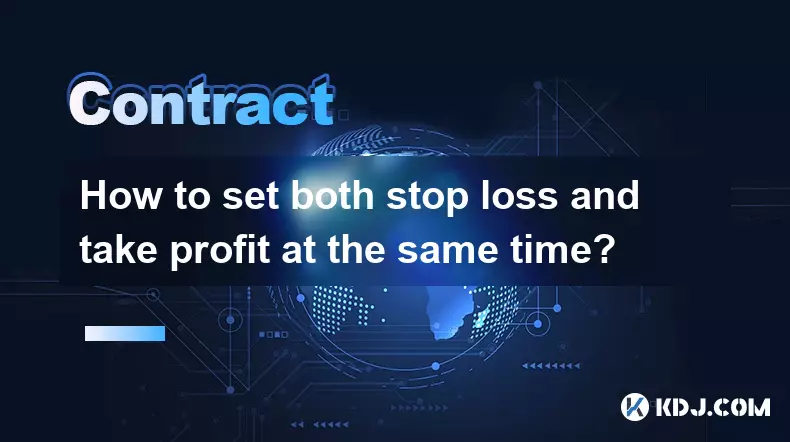
How to set both stop loss and take profit at the same time?
Sep 06,2025 at 04:36pm
Understanding Simultaneous Stop Loss and Take Profit Orders1. Placing both stop loss and take profit orders at the same time is a standard practice in...

What is copy trading for crypto futures?
Sep 07,2025 at 02:00am
What Is Copy Trading in Crypto Futures?1. Copy trading in crypto futures allows investors to automatically replicate the trades of experienced traders...
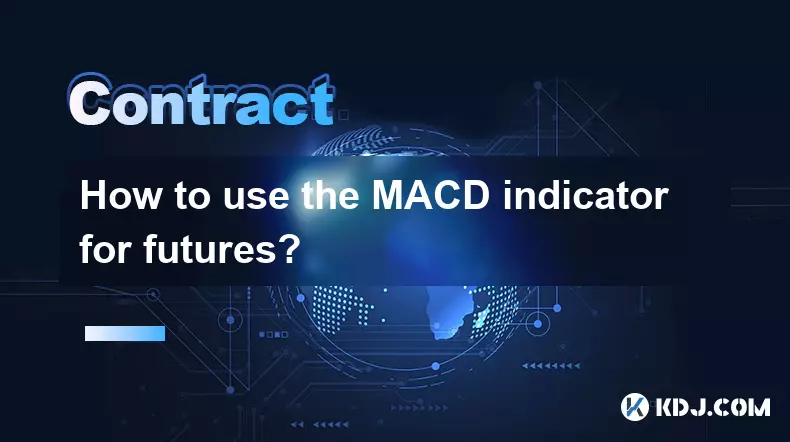
How to use the MACD indicator for futures?
Sep 07,2025 at 09:00pm
Understanding the MACD Indicator in Futures Trading1. The MACD (Moving Average Convergence Divergence) indicator is a momentum oscillator widely used ...

What to do if you are about to be liquidated?
Sep 06,2025 at 01:00am
Understanding Liquidation in the Crypto Market1. Liquidation occurs when a trader’s margin balance falls below the required maintenance margin, forcin...
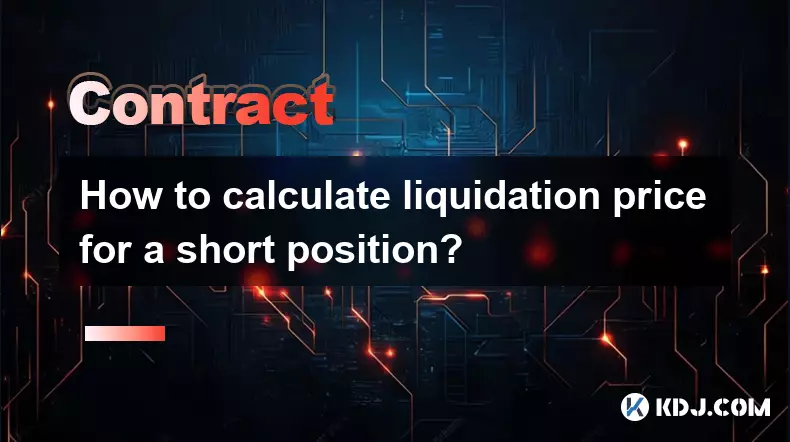
How to calculate liquidation price for a short position?
Sep 08,2025 at 03:54am
Understanding the Basics of Short Position Liquidation1. A short position in the cryptocurrency market involves borrowing an asset and selling it imme...

What is an insurance fund on crypto exchanges?
Sep 06,2025 at 03:36pm
Understanding the Role of Decentralized Exchanges in Modern Cryptocurrency Trading1. Decentralized exchanges (DEXs) have emerged as a cornerstone of t...

How to set both stop loss and take profit at the same time?
Sep 06,2025 at 04:36pm
Understanding Simultaneous Stop Loss and Take Profit Orders1. Placing both stop loss and take profit orders at the same time is a standard practice in...

What is copy trading for crypto futures?
Sep 07,2025 at 02:00am
What Is Copy Trading in Crypto Futures?1. Copy trading in crypto futures allows investors to automatically replicate the trades of experienced traders...

How to use the MACD indicator for futures?
Sep 07,2025 at 09:00pm
Understanding the MACD Indicator in Futures Trading1. The MACD (Moving Average Convergence Divergence) indicator is a momentum oscillator widely used ...

What to do if you are about to be liquidated?
Sep 06,2025 at 01:00am
Understanding Liquidation in the Crypto Market1. Liquidation occurs when a trader’s margin balance falls below the required maintenance margin, forcin...

How to calculate liquidation price for a short position?
Sep 08,2025 at 03:54am
Understanding the Basics of Short Position Liquidation1. A short position in the cryptocurrency market involves borrowing an asset and selling it imme...

What is an insurance fund on crypto exchanges?
Sep 06,2025 at 03:36pm
Understanding the Role of Decentralized Exchanges in Modern Cryptocurrency Trading1. Decentralized exchanges (DEXs) have emerged as a cornerstone of t...
See all articles

























